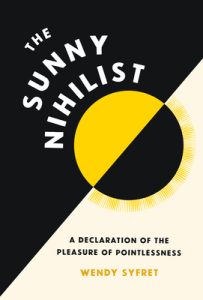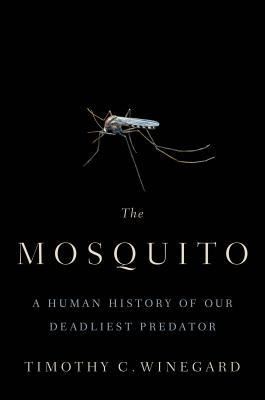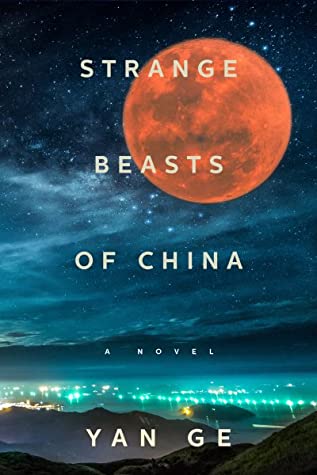Nihilism has a pretty bad rep, and it’s not too hard to see why, but in The Sunny Nihilist, author Wendy Syfret points out the ways in which nihilism, interpreted and applied correctly*, could actually offer a helping hand when you’re feeling overwhelmed with no way out of this hamster wheel of a world (whoever is not feeling overwhelmed at the moment, please spill your secrets. Asking for a friend).
In a way, this wasn’t anything new to me. As in this Guardian article by Syfret, which I believe has been adapted into the book, “Then it hit me: “Who cares? One day I’ll be dead and no one will remember me anyway.” (Syfret, Sunny Nihlism). When feeling as though I’ve spent too long screaming into the void, there’s immense solace to be found thinking about the way in which, if I were to keel over right now, in the grand scheme of things, it’d be ok. The thought of how I’d like my corpse to be dealt with also brings me joy, and the knowledge that even though it doesn’t always feel like it, I’m choosing to continue being alive moment to moment is another thing that lets me take a deeper breath**. It’s not always a guaranteed relief to think of death and the meaninglessness of my own existence, but suffice it to say that I was quite relieved upon reading The Sunny Nihilist that I am not alone in finding it relaxing to do so!
Does all this seem to reflect the nihilism found on social media coming out of millennial and Gen Z output a little too much? I mean, maybe. I’m a millennial who went through art school, so perhaps I’m a little too much the ideal candidate for nihilism to take root in (though as previously discussed, Sartre was my philosopher crush back in the day), but when you think about the coming of age of millennials and Gen Z both, is it really any surprise nihilism seems to be a common touchpoint? (Is there some bias in this absolutely anecdotal gathering of data on my end? Most definitely. If anyone has noticed differently, feel free to share.) On a related note, this one was a bit of news to me since I hadn’t really noticed too much of this on my feeds, but apparently requests for celebrities to enact murder upon oneself are common, which, if you’ve been on the internet, is both surprising but also not really? Of course, Syfret doesn’t turn away from the dark recesses nihilism has also landed people into, and discusses how the very same philosophy can lead you down very different paths – but that in theory, one could harness it for the good!***
Continue reading

